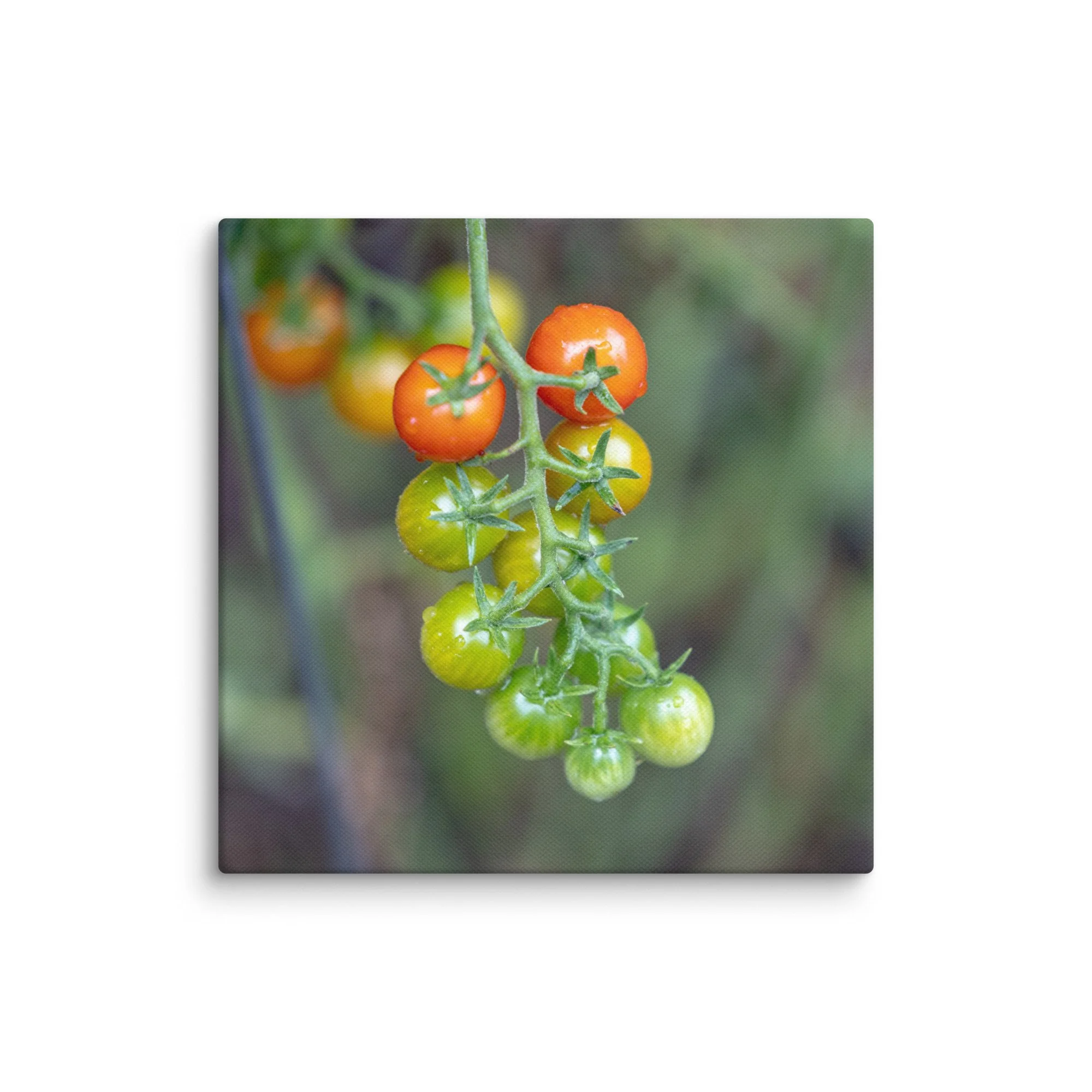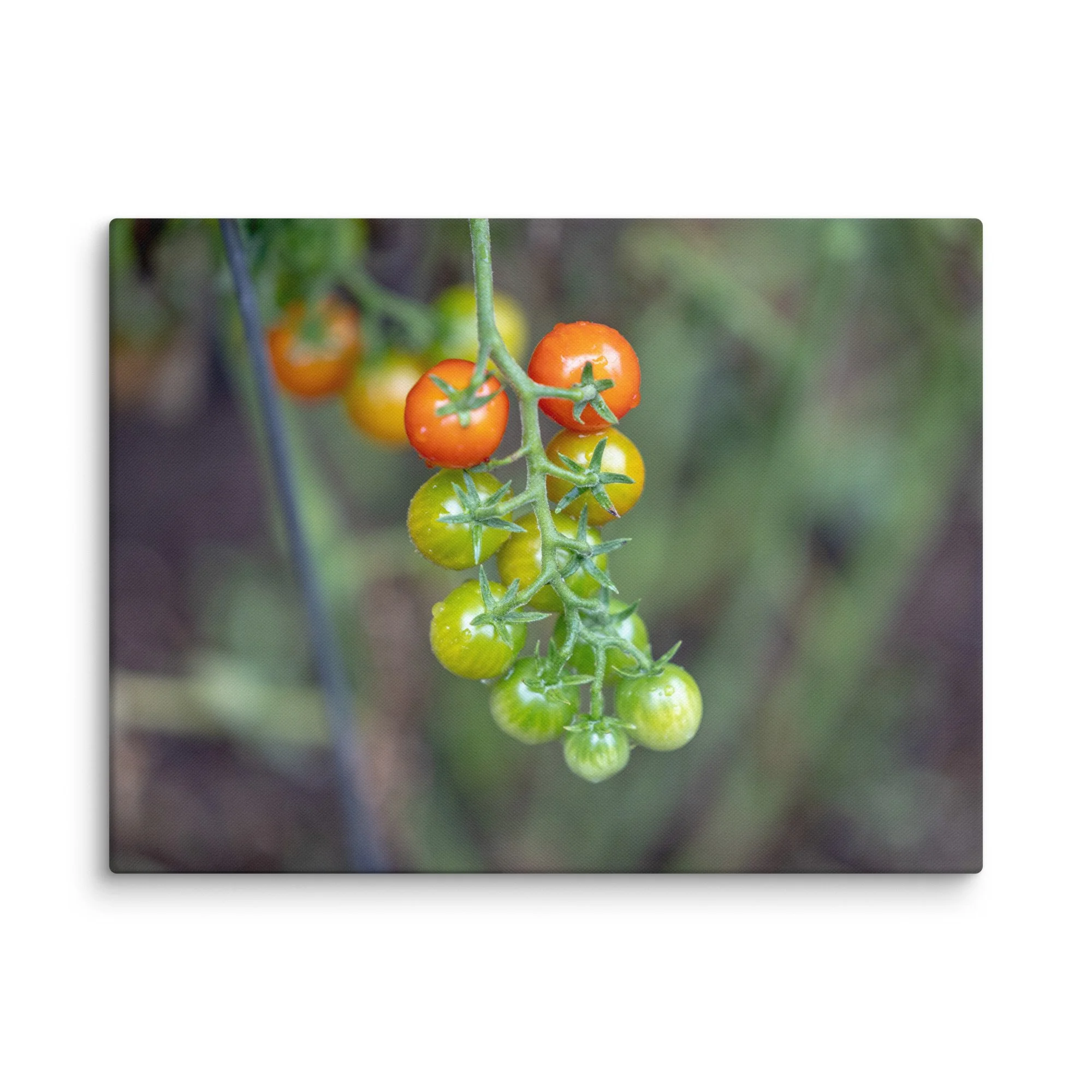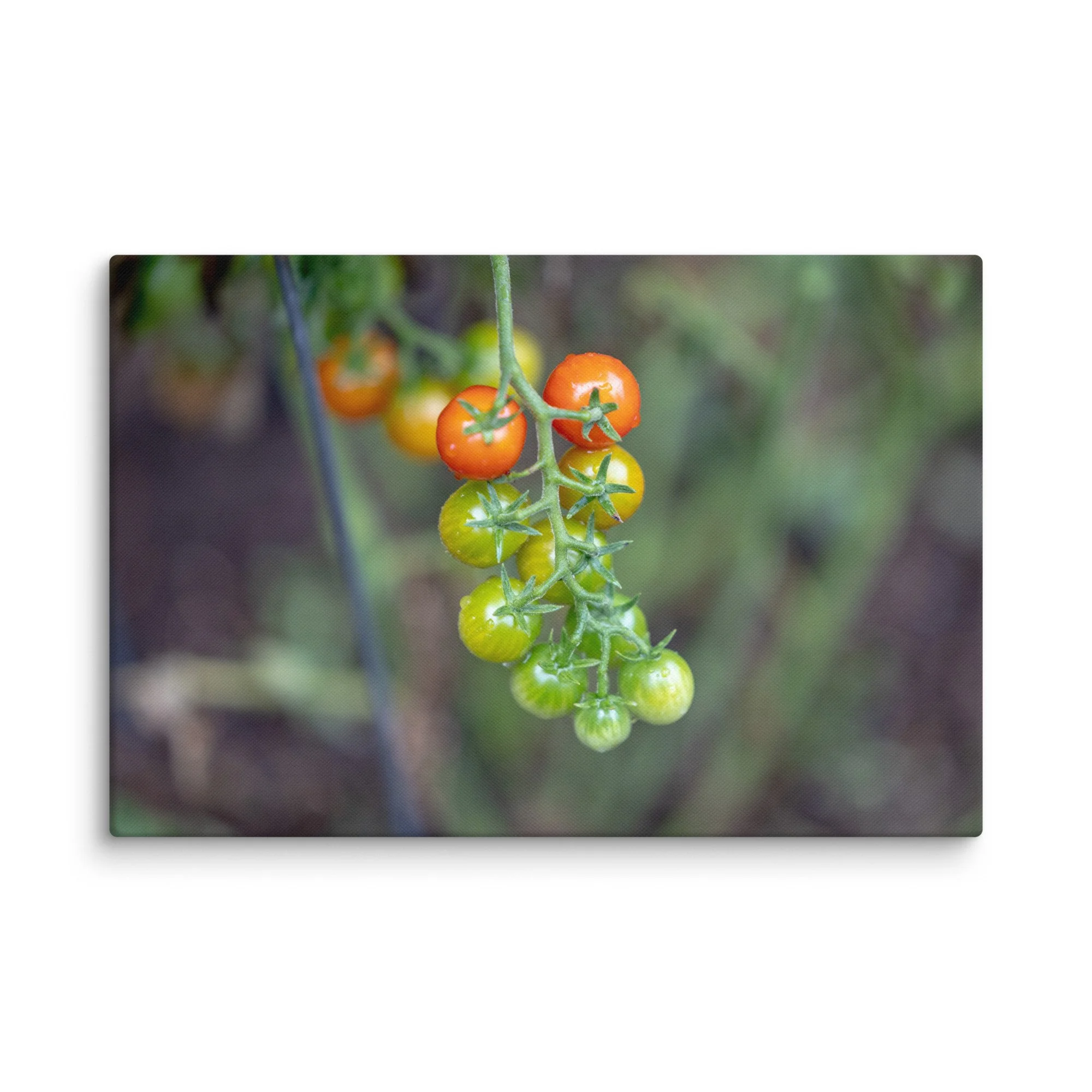 Image 1 of 6
Image 1 of 6

 Image 2 of 6
Image 2 of 6

 Image 3 of 6
Image 3 of 6

 Image 4 of 6
Image 4 of 6

 Image 5 of 6
Image 5 of 6

 Image 6 of 6
Image 6 of 6







Canvas - Cherry Tomatoes
from $40.00
Cherry tomatoes, like all tomatoes, undergo a dramatic chemical transformation to ripen and change color. The process begins after the fruit has grown to its full size, entering what is known as the "mature green" stage, where the fruit is full of chlorophyll. Ripening is primarily triggered by the plant's production of the natural hormone ethylene gas. This gas signals the fruit to break down its chlorophyll, which causes the initial change from deep green to a lighter green, then to the first hint of color, known as the "breaker" or "blush" stage, which can be yellow or light pink. From this point, the fruit actively begins producing the final pigments: lycopene and carotene for red and orange varieties, respectively. This final color development is heavily dependent on temperature, with the optimum range for ripening being 68Fn to 77F (20C to 25C). When temperatures exceed 85F (29C), the production of these key pigments can halt, stalling the color change until the heat subsides. The tomato is considered fully ripe when it has reached its full, even mature color—be it red, yellow, orange, or purple—and easily detaches from the vine.
Size:
Cherry tomatoes, like all tomatoes, undergo a dramatic chemical transformation to ripen and change color. The process begins after the fruit has grown to its full size, entering what is known as the "mature green" stage, where the fruit is full of chlorophyll. Ripening is primarily triggered by the plant's production of the natural hormone ethylene gas. This gas signals the fruit to break down its chlorophyll, which causes the initial change from deep green to a lighter green, then to the first hint of color, known as the "breaker" or "blush" stage, which can be yellow or light pink. From this point, the fruit actively begins producing the final pigments: lycopene and carotene for red and orange varieties, respectively. This final color development is heavily dependent on temperature, with the optimum range for ripening being 68Fn to 77F (20C to 25C). When temperatures exceed 85F (29C), the production of these key pigments can halt, stalling the color change until the heat subsides. The tomato is considered fully ripe when it has reached its full, even mature color—be it red, yellow, orange, or purple—and easily detaches from the vine.
